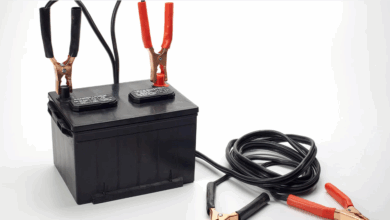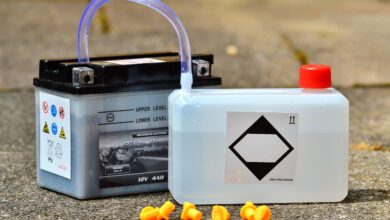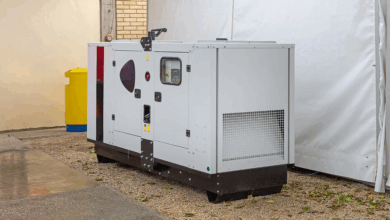Power Your Home: Best Generators

Power Your Home: Your Guide to the Best Generators
Power outages are more than just an inconvenience; they can disrupt daily life, pose safety risks, and even lead to significant financial losses, such as spoiled food or damage from frozen pipes. From severe weather events and grid failures to unexpected accidents, losing power can leave you in the dark, literally and figuratively. This is where a reliable home generator steps in, offering a vital lifeline to keep the lights on, the heat (or AC) running, and essential appliances functioning when the grid goes down.
Choosing the right generator can seem daunting with the variety of options available. This guide will break down the types of generators, key features to consider, and essential safety tips to help you power your home confidently during the next outage.
Why You Need a Home Generator
The necessity of backup power becomes acutely clear when you’re without it. Here’s why investing in a generator is a smart move for homeowners:
- Maintain Essential Comfort: Keep heating/cooling systems, lights, and water pumps operational.
- Protect Perishables: Refrigerators and freezers stay cold, preventing expensive food spoilage.
- Ensure Safety & Security: Lights deter intruders, security systems remain active, and sump pumps prevent basement flooding.
- Stay Connected: Keep phones, computers, and internet running to communicate with loved ones and access information.
- Run Critical Medical Equipment: For those reliant on oxygen concentrators or other powered medical devices, a generator can be life-saving.
- Work/School Continuity: For those working or studying from home, power is non-negotiable.
Understanding the Types of Home Generators
Generators primarily fall into three categories:
-
Portable Generators: These are the most common and often the most affordable option. They are designed to be moved and can power select appliances via extension cords or, more safely, through a transfer switch connected to your home’s electrical panel.
- Pros: Relatively inexpensive, mobile, easy to purchase and set up initially, good for powering specific items or for use away from home (camping, job sites).
- Cons: Require manual start-up and refueling, can be very noisy, typically run on gasoline (which degrades and requires storage), not designed to power an entire house, safety requires careful attention (ventilation, proper connections).
- Best For: Homeowners needing to power a few essential circuits (fridge, lights, furnace fan) during shorter outages, budget-conscious buyers.
-
Standby Generators: These are permanently installed outside your home, similar to an air conditioning unit, and connected directly to your electrical system via an automatic transfer switch (ATS). When grid power fails, the ATS detects the outage and signals the generator to start automatically. Once grid power is restored, the ATS switches back, and the generator shuts off.
- Pros: Automatic operation (works even when you’re not home), can power essential circuits or the entire house depending on size, run on natural gas or propane (no need to store large amounts of liquid fuel), quieter than portable generators, weather-resistant enclosures, high power output.
- Cons: Significant upfront cost (unit plus professional installation), fixed location, requires regular professional maintenance.
- Best For: Homeowners seeking seamless, reliable, whole-house or extensive backup power, those in areas with frequent or long-duration outages, individuals needing power for critical medical equipment.
- Inverter Generators: While often portable, inverter generators are a distinct type due to their advanced technology. They produce AC power, convert it to DC, and then "invert" it back to clean AC power. This process results in stable sine wave power, which is safer for sensitive electronics like computers, phones, and modern appliances with microprocessors.
- Pros: Much quieter than conventional portable generators, highly fuel-efficient (engine speed adjusts to load), produce clean power safe for electronics, often lighter and more compact than similarly powered conventional portables.
- Cons: Generally more expensive than conventional portable generators of the same wattage, may have lower maximum power output compared to the largest conventional portables or standby units.
- Best For: Powering sensitive electronics, camping, RVs, tailgating, basic home backup for specific appliances where noise and fuel efficiency are priorities. Can often be linked together for more power.
Key Factors to Consider When Choosing
Selecting the right generator involves evaluating several factors based on your specific needs and circumstances:
- Power Needs (Wattage): This is the most critical factor. You need to determine what appliances and systems you want to power simultaneously. List everything (fridge, freezer, furnace fan, lights, microwave, TV, etc.) and find their running wattage. Add these up. Then, identify the items with high starting wattage (like refrigerators, AC units, pumps) – they briefly require significantly more power to start their motors. You’ll need a generator with sufficient surge wattage capability to handle these start-up loads. It’s often wise to overestimate slightly to avoid overloading.
- Fuel Type:
- Gasoline: Widely available, but requires careful storage, degrades over time, and refueling during an outage can be difficult.
- Propane: Stores well indefinitely, cleaner burning than gas, but less energy-dense than gasoline, meaning you’ll need more of it or it may provide slightly less power from the same engine size.
- Natural Gas: Unlimited supply (if you have a municipal connection), no storage needed, but the generator must be connected to a gas line and is location-dependent. Power output can be slightly lower than on propane or gasoline.
- Diesel: Most fuel-efficient, long lifespan, but fuel can gel in cold weather, units are often expensive and noisy.
- Dual-Fuel: Offer flexibility by running on either gasoline or propane.
- Noise Level: Generators can be loud. Portable generators are typically the loudest (65-80 dB), while inverter generators are much quieter (50-65 dB), and standby generators fall somewhere in between, often housed in sound-attenuating enclosures. Consider your neighbors and local noise ordinances.
- Installation and Operation: Portable generators require manual setup, starting, and refueling. Standby generators require professional installation by a qualified electrician and plumber (if connecting to gas). Consider whether you are comfortable with manual operation or prefer the convenience of automatic backup.
- Budget: Portable generators are the least expensive upfront, ranging from a few hundred to a couple of thousand dollars. Inverter generators are next, typically starting at $1,000+. Standby generators are the most significant investment, often costing $3,000 – $10,000+ for the unit before installation costs (which can add several thousand more). Factor in fuel costs and maintenance.
- Features: Look for features like multiple outlets, GFCI protection (for safety), fuel gauge, low-oil shutoff, electric start, automatic transfer switch (for standby), remote monitoring, and mobility kits (wheels/handles) for portables.
Essential Generator Safety Tips
Operating a generator safely is paramount. Carbon monoxide poisoning and electrical hazards are serious risks.
- ALWAYS Operate Outdoors: Never run a generator inside your home, garage, shed, or any enclosed space. Place it at least 15-20 feet away from your house, downwind of windows and doors, to prevent dangerous carbon monoxide fumes from entering your home.
- Use a Transfer Switch: For powering hardwired appliances (furnace, well pump) or multiple circuits, a professionally installed transfer switch is essential. This prevents "backfeeding" power onto the utility lines, which can injure or kill utility workers, and safely isolates your home’s electrical system from the grid.
- Proper Connections: For portable generators, use heavy-duty, outdoor-rated extension cords to plug directly into appliances. Do not plug the generator into a wall outlet (backfeeding).
- Fuel Safety: Store fuel in appropriate containers away from living areas and ignition sources. Allow the generator to cool completely before refueling.
- Grounding: Follow the manufacturer’s instructions for grounding your generator.
- Read the Manual: Familiarize yourself with your specific generator’s operation and safety guidelines.
- Install CO Detectors: Have working carbon monoxide detectors with battery backup on every level of your home.
Maintaining Your Generator
Like any engine, generators require regular maintenance to ensure they function when needed. This includes checking and changing the oil, replacing air and fuel filters, inspecting spark plugs, and running the generator periodically (under a load if possible) to ensure it starts and operates correctly. Standby generators typically have recommended annual professional maintenance schedules.
Conclusion
Investing in a home generator is an investment in peace of mind. By understanding the different types – portable for flexible, basic backup; inverter for quiet, sensitive power; and standby for seamless, whole-home coverage – and carefully considering your power needs, budget, and fuel options, you can select the best generator to keep your home powered safely and effectively during outages. Remember that proper installation and adherence to strict safety protocols are just as crucial as choosing the right unit. Don’t wait until the lights go out; plan now to power your home and protect your family and property.
FAQs About Home Generators
Q1: How much power (wattage) do I really need?
A1: Start by listing all the essential appliances and systems you want to power. Find their running wattage (usually on a sticker or in the manual). Add these up. Then, identify items with high starting wattage (refrigerators, pumps, HVAC fans) and ensure the generator’s surge wattage capacity can handle the largest one or two of these starting simultaneously on top of the running load. It’s often better to get slightly more power than you think you’ll need.
Q2: Can I just run extension cords from a portable generator into my house?
A2: Yes, for individual appliances like a fridge or lamp, using heavy-duty, outdoor-rated extension cords is acceptable, provided the generator is located safely outside. However, you must NEVER run extension cords through windows or doors that could pinch them or allow fumes in. For powering hardwired items like furnaces, well pumps, or multiple circuits, a transfer switch connected to your home’s electrical panel is the only safe and proper method.
Q3: What is a transfer switch and why do I need one?
A3: An automatic (ATS) or manual transfer switch is a critical safety device installed between your generator and your home’s electrical panel. It isolates your home’s wiring from the utility power lines. This prevents "backfeeding" – sending power from your generator back into the grid, which can severely injure or kill utility workers repairing lines. It also allows you to power hardwired circuits directly from the generator safely.
Q4: How long can a generator run continuously?
A4: It depends on the type, size, fuel tank capacity (for portables), and load. Portable generators might run for 8-12 hours on a tank of gasoline at a moderate load before needing refueling (after cooling down!). Standby generators running on natural gas can theoretically run indefinitely as long as the gas supply is uninterrupted, while those on propane are limited by the size of the propane tank. Most manufacturers recommend shutting down generators periodically for cool-down and inspection, often after 24-48 hours of continuous use.
Q5: Do generators require maintenance?
A5: Absolutely. Regular maintenance is essential for reliability. This typically includes checking and changing oil, air filters, and spark plugs according to the manufacturer’s schedule. Standby generators often require professional servicing, usually annually. It’s also crucial to start and run your generator regularly (e.g., monthly) to keep components lubricated and ensure it’s ready when an outage occurs.
Q6: Is a noisier generator necessarily more powerful?
A6: Not necessarily. Conventional portable generators tend to be loud regardless of size compared to inverter generators. While larger engines generally produce more power and noise, the type of generator (inverter vs. conventional portable) has a bigger impact on noise levels at similar power outputs. Standby generators manage noise better through design and placement.
Q7: Gasoline vs. Propane for portable generators – which is better?
A7: Gasoline offers slightly more power from a given engine size and is easily accessible. However, it degrades over a few months and requires careful storage. Propane stores indefinitely, burns cleaner, and is easy to swap tanks, but it’s less energy-dense, potentially meaning slightly less power or needing larger tanks. Dual-fuel generators offer the flexibility of using either. The "best" depends on your priorities regarding fuel storage, availability during an outage, and power output needs.




![How to Bypass CO Sensor on Generator – [4-Step Safety Guide]](https://www.generator411.com/wp-content/uploads/2025/08/co-sensor-on-generator-390x220.png)